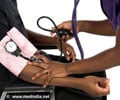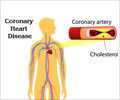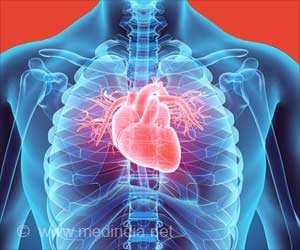People with a combination of low diastolic blood pressure and a high systolic blood pressure are at a greater risk of heart attack and stroke, according to a UC Irvine study.
A UC Irvine study has opined that people with a combination of low diastolic blood pressure and a high systolic blood pressure unfortunately face a greater risk of heart attack and stroke.
Both diastolic and systolic blood pressure values give a better idea of a person's risk of heart attack as compared to the systolic blood pressure values alone.Dr. Stanley Franklin and colleagues at the UC Irvine Heart Disease Prevention Program in collaboration with researchers at the Framingham Heart Study reviewed blood pressure data from 9,657 participants in the Framingham Heart Study who had not received antihypertensive treatment.
It was found that diastolic blood pressure under 70 mm Hg along with high systolic numbers is a superior predictor of future adverse cardiovascular events.
"Systolic blood pressure as a single blood pressure component is usually superior to diastolic blood pressure in predicting cardiovascular risk in middle-aged and older individuals," Franklin said.
He added: "But a very high or very low diastolic blood pressure can add to the risks identified by systolic blood pressure alone."
Currently, physicians diagnose hypertension with systolic and diastolic readings of 140/90 and above.
Advertisement
However, Franklin said that a diastolic number under 70 mm Hg when combined with a systolic blood pressure less that 120 mm Hg indicates normal values with no increased cardiovascular risk.
Advertisement
The combination of blood pressure components is an indicator of increased stiffening of arteries, which is a strong risk factor for future heart attacks and strokes.
Source-ANI
TAN/L















